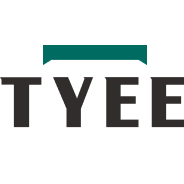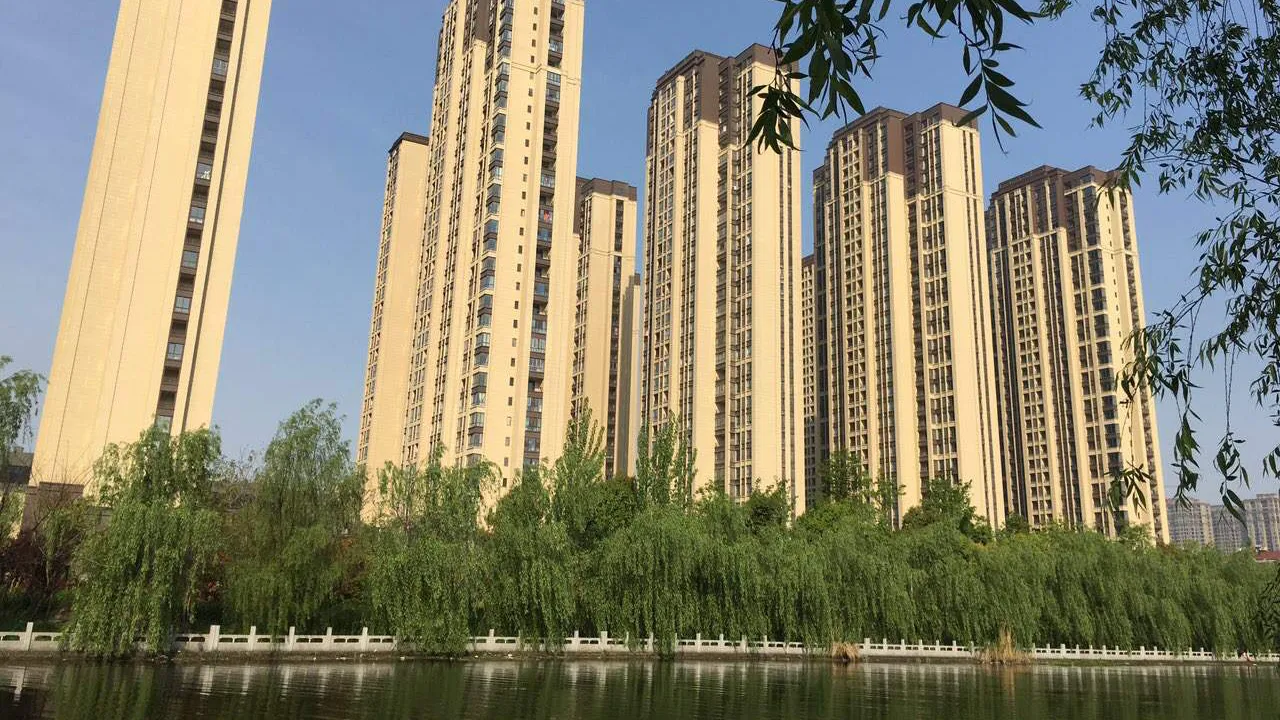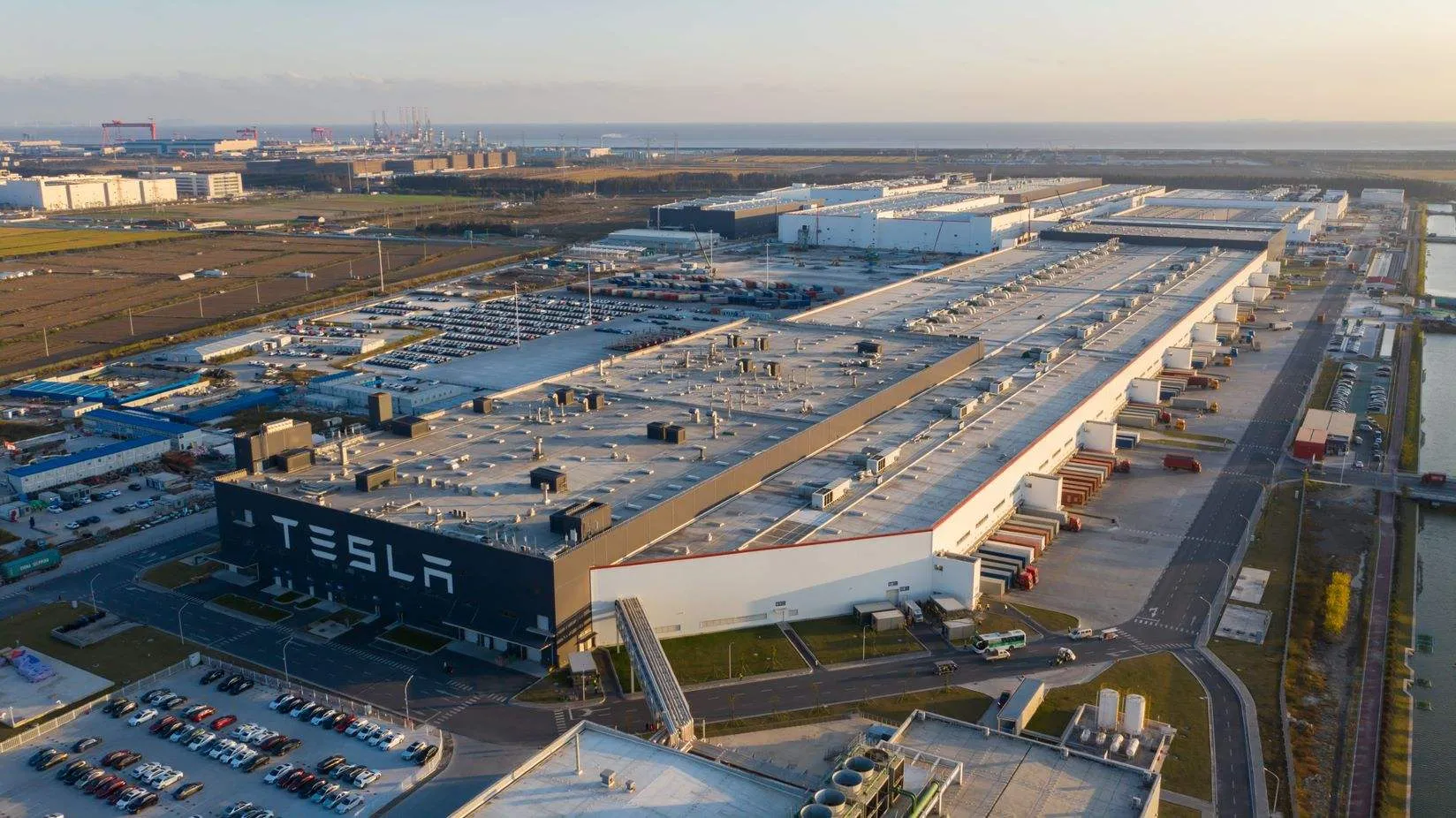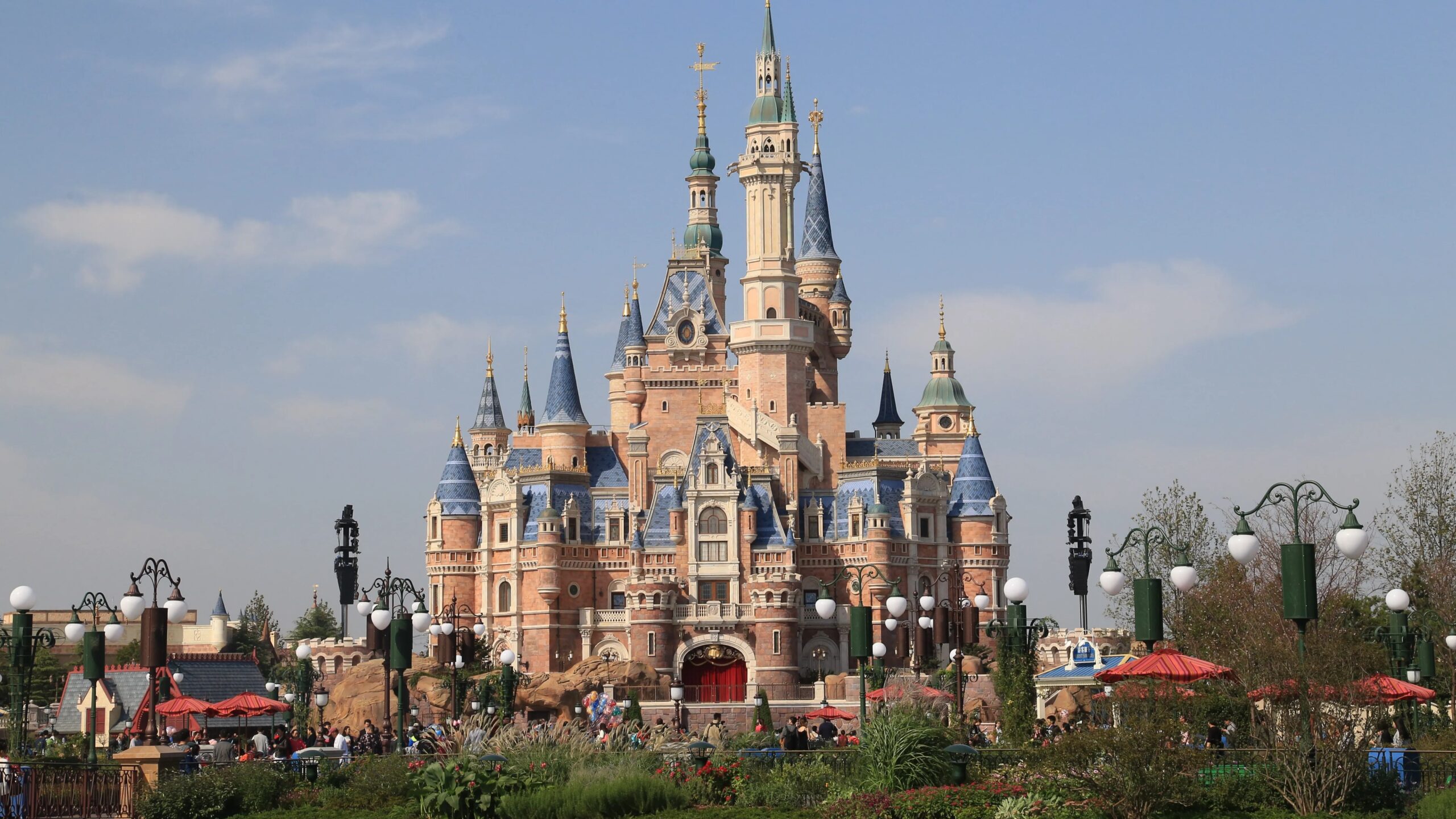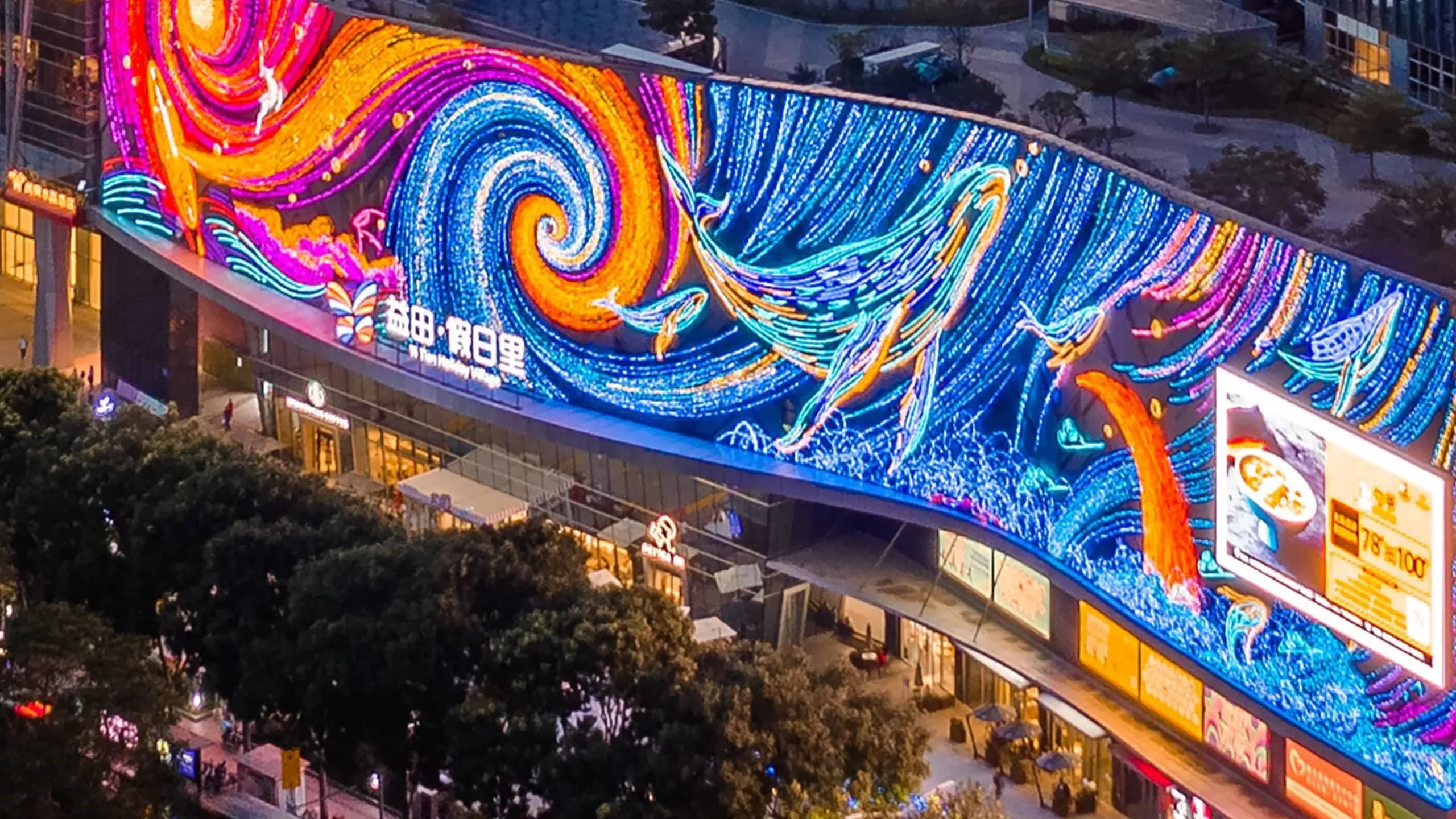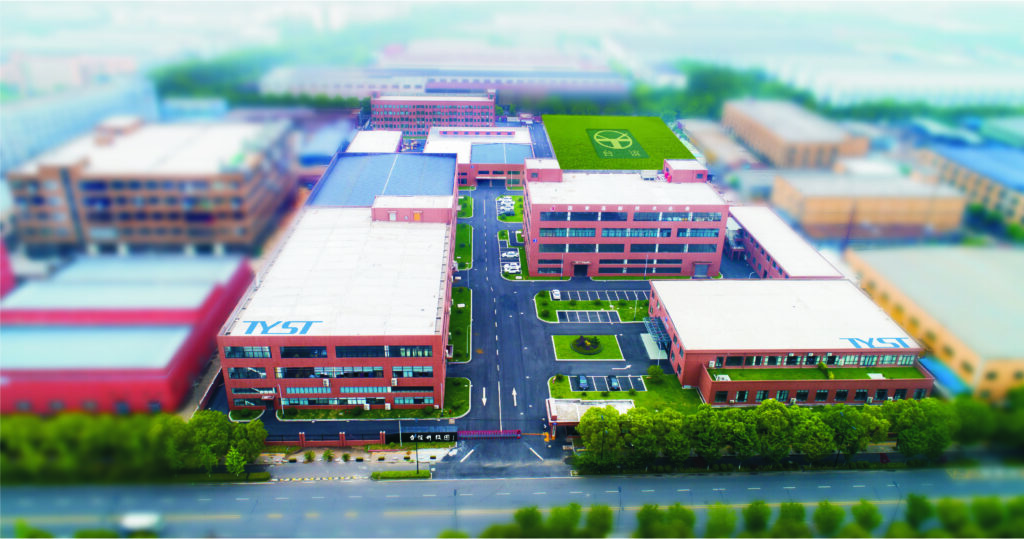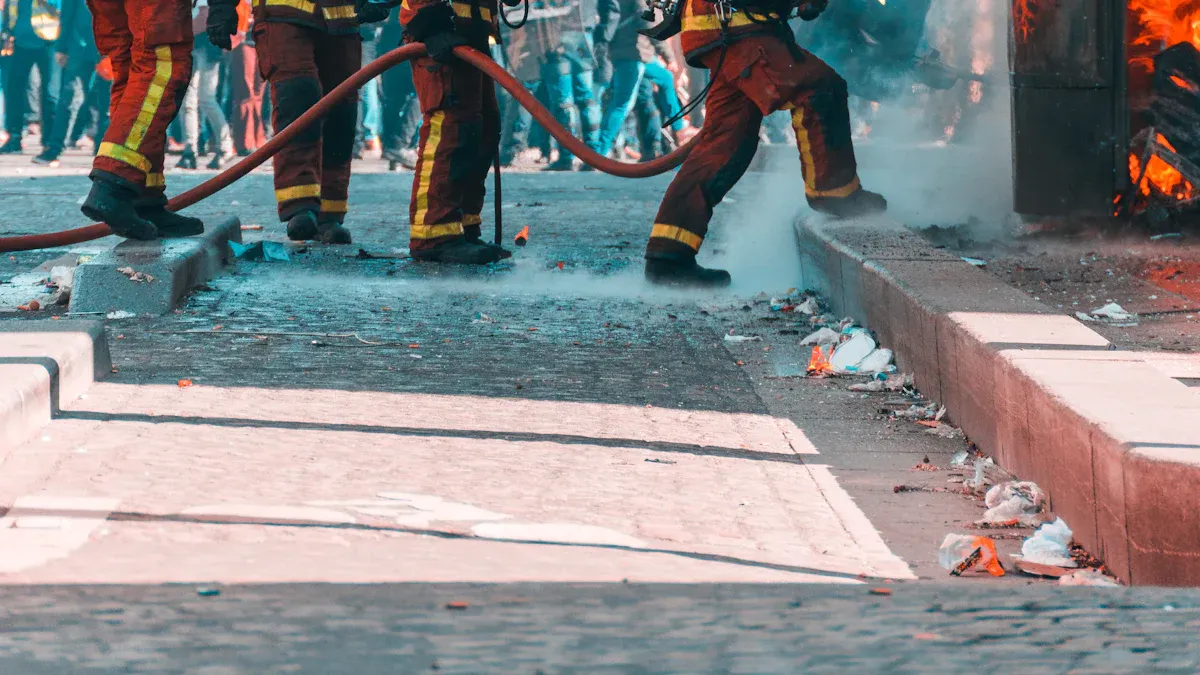
Fire alarm systems are very important in building construction. They help keep people and property safe in cities. Cities today have taller and more complex buildings. These buildings need better fire safety systems. The latest numbers show how serious fires are:
|
Category |
Key Statistics (2023) |
|---|---|
|
Total Fires |
|
|
Fire Deaths |
3,670 |
|
Fire Injuries |
13,350 |
|
Financial Loss |
$23.2 billion |
Buildings are getting more complicated. This means fire alarm systems must find fires quickly. They must watch for danger all the time. They also need to work with building management. These systems must always be safe and dependable. They help lower fire risks and help during emergencies. Tyee is a leader in this field. They make new fire safety solutions for modern buildings. They help keep people and buildings as safe as possible.
Key Takeaways
-
Fire alarm systems keep people and buildings safe. They find fires early and help emergency teams act fast. New rules and smart technology like AI and IoT make fire detection better. They also help stop false alarms and make systems work well. Fire alarms can connect with smart city tools and cloud monitoring. This helps find fires faster and handle emergencies better. Tyee is a leader in making advanced fire safety solutions. These work in big buildings and hard places all over the world. In the future, fire safety will use AI to predict fires. It will also use green solutions and smart systems. This will help cities stay safer and better for the environment.
Fire Alarm Systems in Urban Construction
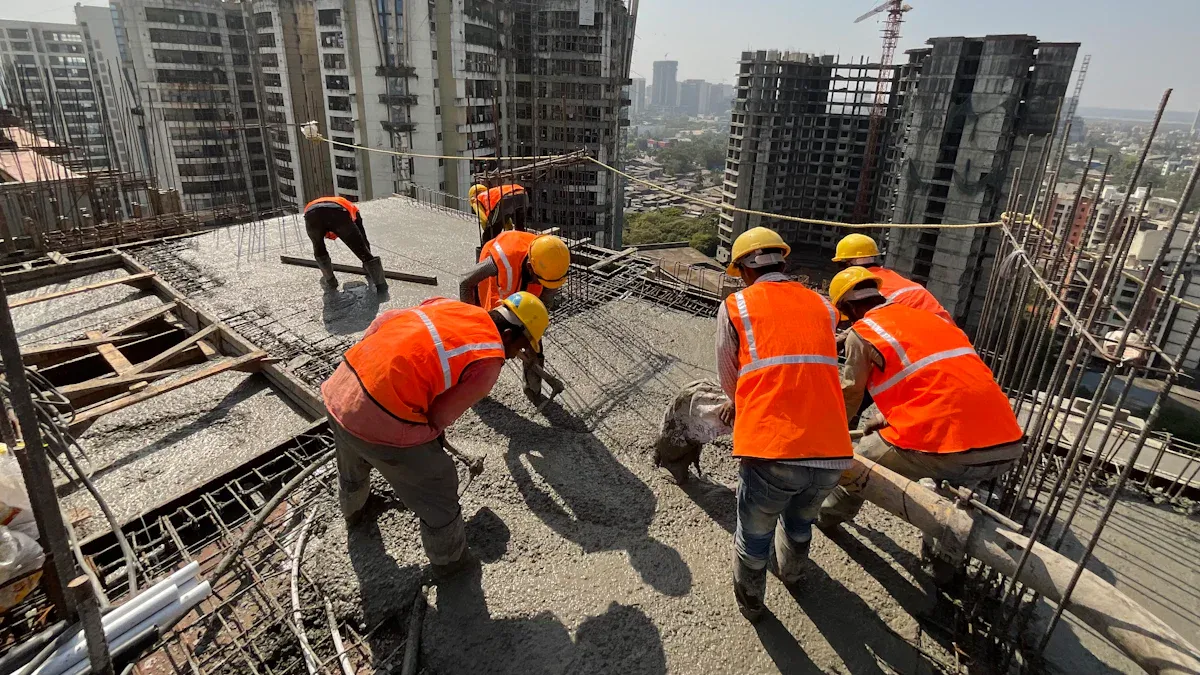
Essential Role in Fire Safety
Fire alarm systems are very important in cities. They help keep people and property safe by warning about fires early. Tall and complex buildings make fire spread faster. These systems must find smoke, heat, or gas right away. Quick detection helps people leave the building safely. It also lets emergency teams act fast.
Fire protection systems do more than just make noise. They work with emergency lights and signs. These tools show people where to go in an emergency. Good fire safety systems lower injuries and save lives. They also help building owners follow safety rules and avoid trouble with the law.
Tyee is a top company in this area. They have many products like automatic fire alarm systems and emergency lights. They also offer non-addressable fire alarm systems. Their products use new technology to keep all buildings safe. Tyee’s systems work for new buildings and for fixing old ones.
Fire alarm systems are not only needed—they help make cities safer and stronger.
Regulatory Drivers and Standards
Strict rules shape how fire alarm systems are made and used. Codes like the National Fire Protection Association (NFPA) standards are important. NFPA 72 is a key rule for fire detection systems. These codes cover how to design, install, check, and fix systems. They make sure alarms find fires early and help people leave quickly. Following these rules saves lives and helps avoid fines.
The International Fire Safety Standards (IFSS) Coalition helps set rules for the world. IFSS makes sure there are basic safety levels everywhere. They also want buildings to show proof they follow the rules. This helps keep fire safety the same in different countries.
New rules make people use better fire alarm technology. For example, Hong Kong now needs smart, IoT fire detection in tall buildings. These rules mean more real-time checks and better system links. In the UAE, rules change often, which is hard but also brings new chances. City plans like Dubai 2040 and Abu Dhabi Vision 2030 want better fire protection. By 2030, many buildings will use AI to find and stop fires.
Other new rules include:
-
Mass alerts in schools.
-
Better smoke detectors to stop false alarms.
-
Stronger ways for emergency teams to talk.
These rules make sure fire alarm systems keep up with new dangers and technology. They also mean workers must keep learning to follow the rules.
Integration with Smart Cities
Modern cities use smart systems. Fire alarm systems must work with these smart city tools. This helps find fires faster and helps during emergencies. Some important needs for this are:
|
Description |
|
|---|---|
|
Sensor Deployment |
Many sensors check temperature, humidity, smoke, and light. |
|
Communication Channels |
Safe and steady links connect sensors and gateways. |
|
Real-time Data Collection & Transmission |
Sensors send data to the cloud for checking and decisions. |
|
Image Processing |
Systems use color to spot fires and stop false alarms. |
|
Alert Generation |
Early warnings help people act fast. |
|
IoT-enabled Cloud Platform |
Cloud links let people watch and store data from far away. |
|
System Architecture |
Systems can grow and support real-time checks and actions. |
|
Power Supply |
Power must stay on during emergencies. |
|
Deployment Strategies |
Sensors work in cities and far-away places. |
|
UAV Integration |
Drones help watch and confirm fires in real time. |
Tyee’s products meet these needs. Their fire alarm systems use smart sensors and cloud tools. The systems collect data and let people watch from far away. Emergency lights and signs work with alarms to guide people out. Tyee’s products help cities become safer and smarter.
When fire alarm systems work with city systems, fires are found faster, help comes sooner, and everyone is safer.
Trends in Fire Alarm and Detection Market
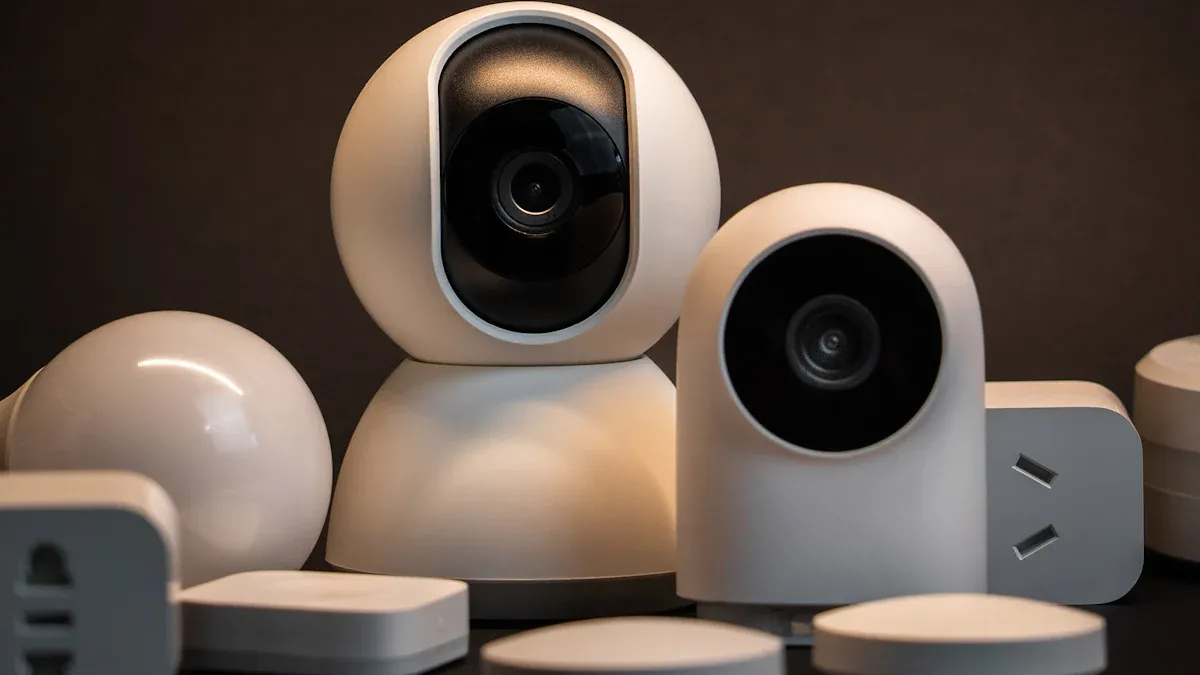
The fire alarm and detection market is growing fast. New technology and smarter systems are changing fire safety. People who plan cities and own buildings need to know these trends. This helps keep everyone safe.
Smart Technologies and IoT
Smart technology and IoT are making fire alarm systems better. New sensors can find smoke, heat, and gas leaks early. These sensors connect to building management systems. When danger is found, alerts go out right away. The system shows where the problem is. This helps emergency teams act fast.
IoT makes these systems work even if local networks fail. Cellular and satellite networks keep alarms working. Smart fire alarm products use AI to cut down on false alarms. They also make detection more accurate. Some detectors use both optical and temperature sensors. This helps them find fires better. Wireless smoke detectors are easy to put in and move.
The table below lists top IoT fire alarm products:
|
Company Name |
Key IoT-Enabled Fire Alarm Features |
Market Role / Focus Area |
|---|---|---|
|
Honeywell International Inc. |
AI-driven detection, smart building integration, predictive maintenance, real-time monitoring |
Market leader with global footprint, industrial & commercial focus |
|
Siemens AG |
High-tech fire alarm systems, AI-powered data, automated emergency responses, centralized monitoring |
Expanding IoT-enabled fire safety portfolio for commercial/industrial use |
|
Johnson Controls International plc |
Advanced sensor tech, cloud-based monitoring, compliance-driven, energy-efficient designs |
Enterprise fire safety solutions, sustainable and scalable systems |
|
Bosch Security Systems |
AI-enhanced fire detection, wireless monitoring, predictive risk assessment |
Smart safety solutions with early-warning technologies |
|
Schneider Electric SE |
Energy-efficient fire detection, integration with industrial automation and building management |
Focus on smart infrastructure and IoT-enabled fire safety |
Smart detection and alert systems are getting smarter. They use wireless tech and new ways to spot fires. This helps stop false alarms and makes response faster. Video fire detection and air sampling are new trends too.
Smart fire alarm systems help cities act fast and keep people safe.
Data-Driven Fire Safety
Data analytics is making fire safety better and faster. Modern fire alarm systems use deep learning to check images and videos. These models can spot small flames or smoke right away. The system sends alerts to emergency teams fast. This helps lower damage and saves time.
IoT devices collect data from many sensors in a building. The system checks this data in the cloud or on local servers. It uses the data to predict risks and plan repairs. For example, a plant used AI to cut safety alerts by 89%. It also made response times 80% faster. The plant followed rules better and needed fewer manual checks.

The fire alarm market is moving from reacting to stopping problems before they start. Data-driven systems help find risks early. They also help with early smoke detection and quick action.
Cloud and Remote Monitoring
Cloud and remote monitoring are now very important. These systems let owners watch fire alarms from anywhere. Real-time monitoring gives instant alerts about fire or system problems. Automated alerts help the right people act fast.
Remote access lets managers control fire systems from any place. Predictive tools use data to find problems before they get worse. This keeps fire alarm systems ready all the time. Cloud monitoring is easy to grow as buildings change.
|
Aspect |
Challenges and Considerations |
|
|---|---|---|
|
Real-Time Monitoring |
Enables immediate alerts and continuous system oversight remotely via mobile and web platforms. |
Requires reliable internet connectivity, which may be a barrier in some buildings. |
|
System Reliability |
Offsite data storage and backup prevent data loss; backup mechanisms maintain alarm function. |
Dependence on network access can pose risks if connectivity is lost. |
|
Maintenance |
Predictive analytics enable proactive maintenance, reducing false alarms and downtime. |
Some users may face challenges integrating with local networks due to security concerns. |
|
Scalability |
Easily scalable without heavy hardware investments, adapting to growing infrastructure needs. |
Initial setup may require cellular communication to bypass local network restrictions. |
|
Integration |
Seamless integration with other building safety systems (surveillance, access control, BMS). |
Integration complexity may vary depending on existing building systems. |
|
Compliance |
Facilitates adherence to fire safety regulations with automated reporting and audit logs. |
Security concerns about internet access and data protection need to be addressed. |
Cloud and remote monitoring are used in many places now. They help owners manage many buildings and respond to emergencies. Central data storage helps spot trends and make better choices. These tools are now a big part of modern fire alarm systems.
The fire alarm market is growing quickly. The table below shows the market size and growth:
|
Year |
Market Size (USD Billion) |
CAGR (%) |
|---|---|---|
|
2024 |
– |
|
|
2025 |
48.66 |
– |
The fire alarm market grows because of new tech and more need for safety. North America leads, but other places are catching up. The future will have even smarter and more connected fire alarm systems.
Fire Protection Systems and Urban Development
System Integration and Interoperability
Cities are growing fast. Buildings are getting more complicated. Fire protection systems must work with other city systems. This helps keep people safe. When these systems connect, they find fires faster. They also help emergency teams do their jobs. There are many reasons why this is important:
-
Cities that grow quickly have crowded places. These places have more fire risks.
-
Hotter weather from climate change makes fires happen more often.
-
Old wires and things that burn easily make buildings more dangerous.
-
Fire disaster management needs help from police, health, and city workers.
-
Technology lets people share information and use resources better in emergencies.
-
Command centers help leaders make good choices and respond quickly.
-
Teaching people about fire safety works best when everyone helps.
When fire protection systems connect with building controls, they find fires sooner. They put out fires faster. They also help people leave buildings safely.
Addressable vs. Non-Addressable Solutions
Picking the right fire detection system depends on the building. Addressable and non-addressable systems are different. The table below shows how they are not the same:
|
Aspect |
Conventional (Non-Addressable) Fire Alarm Systems |
Addressable Fire Alarm Systems |
|---|---|---|
|
System Design |
Zone-based wiring; devices grouped in zones connected to control panel |
Devices individually addressed with unique IDs |
|
Location Identification |
Provides general zone location only |
Pinpoints exact device location of alarm |
|
Complexity |
Simpler design and operation |
More complex; requires specialized training |
|
Cost |
More cost-effective; suitable for smaller or less complex buildings |
Higher installation and maintenance costs |
|
Application Suitability |
Ideal for small buildings or simple layouts |
Best for larger, complex commercial properties |
|
Features |
Basic fire detection and alarm activation |
Advanced features like self-testing, event logging, remote monitoring |
|
Maintenance |
Troubleshooting can be time-consuming due to limited location info |
Easier diagnostics due to precise device identification |
|
Zoning Flexibility |
Fixed zones with limited flexibility |
Flexible zoning customized to building layout |
|
False Alarm Susceptibility |
More prone to false alarms due to zone-based detection |
Reduced false alarms with better signal discrimination |
|
Power Requirements |
Standard power supply |
Requires continuous power supply with backups |
Non-addressable systems are good for small buildings. Addressable systems are better for big, complex places. Both types help stop fires and keep people safe.
tyee’s Smart Fire Protection Solutions
Tyee’s smart fire protection systems are special for cities. They use AI-based fire detection to find many kinds of fires. They can even find fires that are hard to see. IoT sensors and smart programs help find problems early. This keeps the system working well. If some sensors break, the system still protects the building.
Tyee’s emergency lights and signs use bright LEDs. Smart signs show people where to go. They help people escape, even if some exits are blocked. In real tests, over 90% of people found exits fast with these systems. Tyee’s fire protection systems meet top world standards like ISO9001 and UL. They work well in places like hospitals, airports, and museums.
Tyee’s “1+N” solution links one main control with many subsystems. This lets people watch the system from far away and get alerts quickly. Projects like Hangzhou Metro Line 3 and the Museum of the Communist Party of China use these systems. These places are busy and have many challenges. Tyee keeps making their technology better to face new dangers.
Tyee’s smart fire protection systems help cities stay safe. They put out fires fast and help people escape during emergencies.
Challenges and Opportunities
Reducing False Alarms
False alarms are a big problem for fire alarm systems in cities. They can happen because people make mistakes or install things wrong. Sometimes, equipment breaks or things like dust or steam set off alarms. When a false alarm happens, it interrupts emergency teams. It wastes time and resources. People might start to ignore real alarms. First responders may go to places where there is no real danger. This can slow down help for real emergencies.
To fix this, top companies use smart detection technology. These tools tell the difference between real danger and harmless things. Doing regular checks and putting sensors in the right spots helps too. Teaching people how to use the system is important. In big projects, using local data and smart models works well. This can lower false alarms to about 13% for short alerts. Tyee’s systems use many sensors and smart programs. This helps stop false alarms and keeps emergency plans working. It also makes sure help comes fast when needed.
Cybersecurity and System Reliability
Today’s fire alarm systems connect to networks and the cloud. This makes cybersecurity very important. Problems can come from old software or weak passwords. Attacks like denial-of-service or remote code execution are risks. People who do not know enough can also make the system weak. Hackers may try to break in and mess up emergency plans. They might also try to control building systems.
Tyee fights these problems by following world rules and using safe, new software. Their systems use secret codes to keep messages safe. They check who is using the system and do security checks often. The system is always watched and tested quietly. This keeps the system working well. First responders can trust the alarms. Data stays safe and protected.
Market Growth and Global Expansion
The fire alarm market is getting bigger all over the world. More rules, fast city growth, and new tech like IoT and AI help this happen. The market could be worth over USD 57 billion by 2032. Asia Pacific is growing fastest because of new buildings and government help. Companies like tyee see chances in smart city projects and new markets.
More people care about fire safety now. More buildings are being built. There is a bigger need for smart systems. Tyee offers systems that can grow and work in many places. They are moving into fast-growing areas.
Case Study: tyee in the African Market
Tyee’s move into Africa shows both problems and chances. The company had to deal with power that was not always steady. The weather could be very hot or cold. Rules were different in each place. Buildings were not all the same, so solutions had to change. Even with these problems, cities in Africa are growing fast. More people want better fire safety.
Tyee made products that work in tough places. They made sure their systems followed world rules. Their systems use smart tech and can be watched from far away. Working with local partners like Weihai International helped a lot. Tyee gave special solutions and support. This made emergency response better. It also made buildings safer for businesses, factories, and homes in Africa.
Tyee’s work in Africa shows they can change, create new ideas, and want to grow around the world.
Future of Fire Safety in Urban Construction
AI and Predictive Analytics
Artificial intelligence is changing fire safety. In cities, AI can now guess fire risks very quickly. These models use building data and test fire situations. The table below shows how AI helps fire safety:
|
Aspect |
Description |
|---|---|
|
AI Models Used |
Generative models like GANs and diffusion models |
|
Training Data |
Fire simulations in multi-room buildings with different shapes and partitions |
|
Prediction Targets |
Smoke movement, temperature, flashover, and fire spread in real time |
|
Performance |
Diffusion models reach over 94% accuracy; GANs also perform well |
|
Efficiency |
AI predicts fire scenarios in seconds, much faster than traditional simulations |
|
Application Benefits |
Early risk assessment, better evacuation planning, and improved fire safety engineering |
AI helps engineers make safer buildings. It lets them change plans fast if needed. These new tools make city safety better and more dependable.
Sustainable and Green Solutions
The future of fire protection uses green ideas. New systems care about safety and the environment. Some good choices are:
-
Water mist systems use tiny drops to stop fires. They save up to 90% more water than old sprinklers.
-
Clean agent systems like FM-200 and NOVEC 1230 are safe and leave nothing behind.
-
Aerosol systems use small particles to stop fires. They are small and easy to take care of.
-
Biodegradable foams come from plants. They break down fast and do not leave bad stuff.
-
Rechargeable and inert gas extinguishers are better for the earth and do not hurt the ozone.
These choices keep people and nature safe. They help make green buildings and smart city growth.
tyee’s Vision and Innovation
Tyee is a leader in fire safety’s future. The company works on AI detection, cloud checks, and smart escape systems. Tyee’s products change with new risks and help green building. Their tools meet world rules and use top technology. Tyee wants cities to be safer, smarter, and greener. The company keeps making its systems better for new problems.
The future of fire safety needs new ideas, green choices, and care for everyone in every city.
Cities need better fire safety as they grow. Today, cities use advanced systems to keep people safe. These systems help people act fast in emergencies. Modern fire safety uses IoT and smart codes to spot risks early. They help stop false alarms and make quick action possible.
-
Centralized platforms let teams talk and handle emergencies together.
-
Integrated systems follow rules, control building parts, and show safe ways out.
-
Real-time data helps emergency crews focus on saving people.
Tyee is known for new ideas, high quality, and working worldwide. Their solutions help cities follow fire safety rules and build safer places for the future.
FAQ
What makes tyee fire alarm systems suitable for modern cities?
Tyee uses smart sensors and cloud tools in its systems. These features help buildings find fires fast. They also help people leave safely. Tyee’s products work well in busy cities. They meet world safety rules and fit many building types.
How do fire alarm systems reduce false alarms?
Modern fire alarm systems use special sensors and smart programs. These tools help tell real fires from things like dust or steam. Checking the system often and setting it up right also helps stop false alarms.
Can fire alarm systems connect with other building systems?
Yes. Many fire alarm systems, like tyee’s, link with building controls. They also work with security and emergency lights. This helps teams work together and keeps people safer. It also helps cities become smarter.
Why is remote monitoring important for fire safety?
Remote monitoring lets managers check fire alarms from anywhere. They get alerts right away and can act fast in emergencies. This also helps keep the system working and ready all the time.
What certifications do tyee fire safety products have?
Tyee products have certifications like ISO9001, UL and CE. These show the products follow strict world safety and quality rules.

